Now I really get to stand on my soapbox. Because I have been hands down and fundamentally against sugar for decades. I cherish getting to share why is sugar bad for you.
I’ll never forget the words of some of the national level bodybuilders who took me under their wing when I was fourteen. When I asked how they started preparing for a competition, they always said, cut your sugars first.
Well, this stuck. And it has a valid meaning!
I applied it to my clients as a new trainer in the late 80’s with great success. Then when attending college, I made it my mission to learn why is sugar bad for you.
Glynn’s Guide:
Takeaways that won’t fail you
- When trying to lose weight, cut your sugars first.
- When trying to improve your overall health, cut your sugars first.
- If you want to lose weight, I would not eat more than 10 grams of sugar a day.
- If you’re trying to stay healthy, I would not exceed 30 grams a day.
- Excess sugar sets a “hormonal stage” for weight gain.
- Excess sugar heavily contributes to type 2 diabetes and poor blood chemistry leading to cardiovascular disease.
- Just because it’s fruit, it doesn’t mean the sugar content doesn’t count.
Armed with the knowledge and experience, I often broke into [read, diarrhea of the mouth] sermons about sugar being the biggest problem. Most of the time it fell on deaf ears.
Pffttt, ha, right they said. Don’t you know? Fat, particularly saturated fat is the problem. I called bull then and I call bull now. Sugar is the nemesis we need to deal with sooner than later. It contributes to so many medical problems. These problems burden both the individual and society.
In my past, I used to coordinate the diets for individuals doing fitness, bodybuilding competitions, and pageants. Twelve weeks out from their competition, the first thing we would do is cut out all sugars. This was followed with weekly changes manipulating fats, proteins, and complex starches.
It was always amazing how quickly they changed after cutting sugars for just a week! And yes, that included all fruit, bread, yogurts, or anything else that secretly contains sugar. Most of us respond somewhat differently to different ratios of protein, fats, and complex carbohydrates, but we almost all respond the same to a drop in simple sugars (positively).
Simply put, by not elevating your insulin levels consistently throughout the day, we’re better able to burn fat. Remember, fat usage as a fuel source is at its minimum when insulin levels are high. And sugar wreaks havoc on this process.
But there are additional complications that too much sugar causes. Let’s dive into sugar!
Different Types of Sugar
Sugar is a generic term encompassing several different types of monosaccharidesA monosaccharide is a carbohydrate that consists of a single ring of carbon, hydrogen, and oxygen. and disaccharidesA disaccharide is a pair of monosaccharides linked together..
The monosaccharides are:
Glucose:
This sugar is one of the two sugars in every disaccharide. It also makes up all polysaccharides. We should only consider glucose as a building block for some of the sugars we consume in our diet. Just know that all starch is broken down into glucose. And all other types of sugar include a glucose molecule.
Fructose:
This is the sweetest of the sugars. It occurs naturally in honey and fruits. Fructose is absorbed differently than other monosaccharides, so it does not elicit the same effect on blood sugar levels and insulin. We’ll discuss this one (high fructose corn syrup) in more detail later.
Galactose:
This monosaccharide does not occur free in nature but joins with another monosaccharide to form lactose in milk.
The disaccharides:
Sucrose:
You know this as table sugar. It’s the combination of the monosaccharides, glucose, and fructose. It’s extracted and refined from the juices of sugar cane and sugar beets.
Lactose:
Mentioned earlier, galactose and glucose combine to form lactose. This is the primary sugar in milk.
Maltose:
This is less common and is simply two glucose molecules joined. It occurs when starch (a polysaccharide) breaks down.
Recall, that we can only absorb monosaccharides into our bloodstream.
Disaccharides are broken into their individual components (monosaccharides) to be absorbed.
So to simplify, a monosaccharide is one link of a chain, a disaccharide is two connected links of a chain, and a polysaccharide is many links in a chain. We cleave off each link to be absorbed.
What’s the Difference Between Unrefined Sugar and Refined Sugar?
That’s simple.
The above monosaccharides and disaccharides are all found in nature. When we consume things like fruit and honey, we’re consuming unrefined sugars.
When we extract or chemically alter mono and disaccharides, it becomes a refined sugar. This includes invert sugar, corn sugar, corn syrups/solids, high fructose corn syrup, and even sucrose when extracted.
A Little History on Sugar as a Sweetener
Adding refined sugar as a sweetener is a fairly recent change in human history. Honey was one of the original sweeteners but was rare and expensive. This made it a delicacy for the wealthy. Shocking that excess body weight was fairly restricted to the wealthy during this period. Of course, this can also be attributed to an abundance of calories.
We can also note the introduction of sugar to developing countries correlates with a rise in obesity and cardiovascular disease (CVD).
During the ’60s a typical Western diet was both high in fat and sugar. This is where the initial thought was conceived that sugar may also play an underlying role in cardiovascular disease and obesity.
So, fast forward to the ’80s with the fat-free craze. And despite this craze, the obesity epidemic has only worsened. Cardiovascular disease also worsened.
Well, guess what, we were initially barking up the wrong tree! The fat-free craze led to an increase in sugar consumption. And now, we’re worse off because of the fat-free societal push.
In fact, the most recent data for high-fat diets that minimize carbohydrates shows a reduction in obesity and CVD.
Much of the research done has been on sugar-sweetened beverages and fruit juices. A large amount has accumulated and contributes to a realization of sugars dangers.
How Our Body Uses Sugar and Its Metabolism
The direction sugar takes once eaten depends largely on our external energy demands. The different demands are largely regulated by insulinThe main role of insulin is to transport glucose from the bloodstream to the cells. It also stimulates the conversion of excess glucose into fat for storage., glucagonThe main role of glucagon is to elicit the release of glucose from storage., epinephrineIt modulates our stress response and very quick to return glucose from storage to the bloodstream. and corticosteroidsGlucocorticoids (cortisol) helps the body adapt to external changes by regulating blood sugar levels, keeping them consistent..
A quick review shows us that only monosaccharides can be absorbed into the bloodstream. The more monosaccharides linked together, the more complex the carbohydrate. Therefore, a starch such as sweet potato, being more complex, takes longer to absorb. Sugar, on the other hand, requires very little breakdown and is absorbed quickly. This is why we say it spikes your insulin levels.
You can read more detail on this topic in my article on carbohydrate metabolism.
The Use of Monosaccharides… Glycolysis
So, the carbohydrates we eat are ultimately broken down to glucose. Well, glycolysis is like taking an ax and splitting all those glucose molecules in half. Once the ax severs the glucose in half, the carnage we’re left with is two molecules of pyruvate.
Pyruvate is a really important part of this discussion because this is where two different paths can be taken. No doubt, you’ve heard the words aerobic and anaerobic spoken when discussing strength training vs. cardiovascular training. Those terms are simple… think of aerobic as in the presence of oxygen. And anaerobic as without oxygen.
OK, so now onto pyruvate. Let’s say you’re walking or jogging on the treadmill. Pyruvate would follow the aerobic (in the presence of oxygen) path and enter the Krebs cycle to be broken down into ATP. Think of ATP as the actual gasoline that we burn to make things move. The exhaust from this process is the CO2 we exhale. It’s a long and complicated process.
Now, instead of jogging on the treadmill, let’s say you’re squatting with weight to failure. Failure happens so quickly (under a minute) that the Krebs cycle takes too long to produce the gasoline (ATP) needed.
So, instead, pyruvate is converted into lactate, which is broken down to ultimately produce the gasoline (ATP). Its “exhaust” is lactic acid. There’s a cool aspect to lactic acid once removed from the muscle tissue. It’s taxied back to the liver via the Cori cycle and turned back into pyruvate to enter back into the system once again. It’s recycling at its finest!
Any glucose not used for energy is stored as glycogen in the liver and muscle tissue. Excess beyond our storage capacity is converted to adipose tissue (fat).
Armed with a little understanding of how sugar is used in our body, let’s discuss some issues.
How Much Sugar is Bad for You?
Despite finding so many faults with sugar, there’s still room for a little in one’s dietary regimen.
It’s not that sugar is fundamentally bad, it’s the effect it has on our hormones. These hormones dictate how calories are utilized and stored.
The WHO suggests less than 10% of daily calories should come from sugar. This is 50 grams of sugar for a 2000 calorie diet. In my book, that’s still too much. The American Heart Association suggests limiting added sugar to less than 25 grams for women and less than 38 grams for men a day.
If your objective is to stay healthy, I suggest 0-30 grams a day, max. We can handle that amount without any difficulty.
If your objective is to stay lean, I suggest no more than 0-10 grams a day.
This is also that point where one has to decide what is more important. Enjoy the societal pleasures of immediate gratification. Or maintain your ideal body weight. Emphasis on “your.”
What’s more important to you?
Why is Sugar Bad for You?
It’s predominantly the effect sugar has on your hormones that makes it dangerous in excess. Not just the additional empty calories. These changes wreak havoc on us. Below is a list of many complications from excess daily intake of sugar. And these complications seriously hamper one’s lifestyle as well as cost a lot of money in the long run.
- Hypertension
- Diabetes
- Cardiovascular disease
- Obesity
- Lipogenesis in the liver
- liverHepaticmetabolic formation of fat triglyceride synthesis
- Increased triglyceride levels
- Increased LDL
- Decreased HDL
- Increased inflammatory markersshown to predict future cardiovascular events in individuals with and without established cardiovascular disease (CVD)
- A connection to rheumatoid arthritis (read as sugar and joint pain)
Here is the shortlist of a lot of supporting (quality) research.
Yang states,
“We observed a significant relationship between added sugar consumption and increased risk for CVD mortality.”
Aeberli states,
“The present data show potentially harmful effects of low to moderate consumption of SSBs [sugar sweetened beverages] on markers of cardiovascular risk such as LDL particles, fasting glucose, and hs-CRP within just 3 wk in healthy young men, which is of particular significance for young consumers.”
Hu states,
“Regular consumption of sugar-sweetened soda, but not diet soda, is associated with increased risk of seropositive RA in women, independent of other dietary and lifestyle factors.”
Hu states,
“Recently, two large RCTs with a high degree of compliance provided convincing data that reducing consumption of SSBs significantly decreases weight gain and adiposity in children and adolescents.”
Malik states,
“Our systematic review and meta-analysis of prospective cohort studies and RCTs provide evidence that SSB consumption promotes weight gain in children and adults.”
Hu states,
“Another meta‐analysis of eight prospective cohort studies found that one to two servings per day of SSB intake was associated with a 26% (95% CI 12–41%) greater risk of developing T2D compared with the occasional intake (less than one serving per month).”
I could go on and on, but you get the idea.
On a side note, I train a podiatrist.
I asked him what percentage of lower extremity amputations he does are a result of uncontrolled diabetes. Didn’t take him long to answer. Eighty to eighty-five percent. That’s a lot.
Was the consumption of so much sugar or carbohydrates worth that loss? You tell me.
Does Sugar Make You Fat?
Sugar in and of itself will not make you fat. It’s the “metabolic stage” (if you will) it sets when added infrequent bouts to the diet.
I have to state, again that in the 60’s the intake of saturated fat and high sugar became more prominent. This points to the potential of sugar being a large contributor to poor cardiovascular health and obesity.
Epidemiology studies clearly show a relationship between excess sugar and cardiovascular disease/obesity. That said, correlation is not causation. So, let’s look deeper…
As stated previously, epidemiology studies show that the introduction of additional sugar to recently developing countries has yielded a rise in their CVD and obesity rates. This is a red flag for me. And I can’t disregard the changes that occur when a client cuts their sugar.
Yes, any calories in excess will cause weight gain. But because of the hormonal changes sugar causes (and the effect on the gut microbiome), it’s far more likely to gain fat weight.
Once again, want to lose fat weight? Cut your sugars out first. Period!
Is Too Much Natural Sugar Bad?
Let’s look at fruit or fruit juice. And just because the fruit is not candy or a sugar-sweetened beverage, doesn’t mean it’s not glucose or fructose once broken down. Yeah, there’s some fiber in there. And additional vitamins. So, then save it as a treat and switch to veggies for your fiber and vitamins/minerals.
Let me tell you a story about a client in my other business, Paradigm Fitness. We’ll call her Debby.
She’s a fitness enthusiast and loves to power-lift. But she was holding on to an extra 15 pounds that she couldn’t shake.
Debby ate well, but there was one thing that slipped through the cracks. She was still eating a lot of fruit. Like so many, she was taught this was a good thing.
So, I looked at her diet and commented, “this will be easier than you think Debby!”
I said just replace your fruits with veggies and we have our solution. So, she did. It took about four weeks to shed the extra fifteen pounds.
It was the sugar in the fruits.
Okay, you say, so cutting sugars also cut calories.
True, but we’re only talking about three to four small fruit servings a day that was eliminated. That does not equate to that many calories.
Too Much Sugar Side Effects
Here’s a shortlist of many of the short and long-term side effects of eating too much sugar:
- Elevated blood sugar, which erratically raises insulin. Tough to use stored fat as a fuel source when insulin is elevated.
- Craving for additional sugar. I did not do a literature review on this point, but you have certainly experienced this occur.
- A fast track to type two diabetes.
- Poor blood chemistry within three weeks of eating too much sugar.
- Weight gain, of course.
Sugar and Inflammation
This is a newer development, so there’s less research to review.
That said, there is evidence that elevated sugar consumption raises inflammatory markers. These markers have been shown to predict future complications in people with or without cardiovascular disease.
One more reason to keep your sugars low!
Sugar and the Common Cold
Despite not finding any research on this subject, I would like to draw a correlation. This is my educated opinion, so take it how you like.
There is research to back elevated inflammation with too much sugar, so I can only cross-correlate the two. This sets the stage for a slower recovery. That’s all I’m willing to write about without more research to back my thoughts.
I genuinely don’t think a lot of work has been done on this aspect of sugar consumption and the rhinovirus. Here’s another option for you grad students looking for the material.
Too much sugar and COVID 19
I feel obligated to mention the latest research on COVID 19 and its connection to diabetes. The research has been piling up quickly and it’s blatantly clear that obesity, diabetes, and cardiovascular disease drastically worsen the effects of the virus.
Avoiding sugar is the first step in the treatment of diabetes and obesity. It’s a no brainer to minimize sugar when looking for ways to “lessen the blow” of COVID 19.
So, let’s readdress too much sugar side effects. You’re setting the stage for a more difficult battle with COVID 19 if you contract the virus.
As if we needed another reason to minimize sugar! As far as I’m concerned, this is a really good reason to keep your sugars low.
More insight on Fructose and High Fructose Corn Syrup
What is high fructose corn syrup? Parker describes it thoroughly…
“HFCS is made from corn, the “king of crops” using chemicals (caustic soda, hydrochloric acid) and enzymes (α-amylase and glucoamylase) to hydrolyze corn starch to corn syrup containing mostly glucose and a third enzyme (glucose isomerase) to isomerize glucose in corn syrup to fructose to yield HFCS products classified according to their fructose content: HFCS-90, HFCS-42, and HFCS-55. HFCS-90 is the major product of these chemical reactions and is blended with glucose syrup to obtain HFCS-42 and HFCS-55.”
Here’s a simple explanation.
It’s a corn-syrup sweetener used predominantly in processed foods and drinks. Obviously, it’s extracted from corn. It’s inexpensive and very sweet. Fructose is the bulk ingredient mixed with some glucose.
I found plenty of supporting evidence that fructose plays a real role in cardiorenal disease. This is due to its ability to raise uric acid levels.
Despite it being low glycemic, there are several issues (below) stacked against the use of fructose as a sweetener.
Johnson states,
“Fructose is a major component of added sugars and is distinct from other sugars in its ability to cause intracellular ATP depletion, nucleotide turnover, and the generation of uric acid. Recent studies show that fructose-induced uric acid generation causes mitochondrial oxidative stress that stimulates fat accumulation independent of excessive caloric intake.”
Another issue with fructose is its ability to alter your blood profile in an adverse way. In other words, elevate LDL and decrease HDL. So, up with the bad cholesterol and down with the good.
Yes, you have to consume a lot of it, but sadly many are consuming a lot. Check your labels if you eat a lot of processed foods. There’s a lot of hidden HFCS in so many different things.
A Common Theme in My Work
I bring this up a lot, but there’s real merit to how sugar affects our gut microbiota.
Our microbiota has a real influence on our enteric nervous system. This gut/brain axis has a strong influence on our metabolic hormones.
I’ve said this before, but I’ll restate it now. “Imagine your gut is a classroom and the kids are the bacteria. A lot of disruptive kids are like a lot of the bacteria high sugar diets nurture.
How successful do you think the classroom is? Exactly!”
You can read more about the enteric nervous system in my article Still Feeling Hungry After Eating? Here’s Why (And How to Fix It).
Artificial Sweeteners
You can read more about artificial sweeteners in my article: The 151 Best Keto Snacks.
Conclusion on Sugar
So, why is too much sugar bad for us?
I get this question all the time. And it’s something I speak about more than any other nutrition topic. I’ve always felt that sugar was worse for us than once believed. The overwhelming amount of quality research to back this point just reinforces it more. I can’t believe how much I had at my disposal when preparing this article.
So, in summary, excess sugar definitely causes the following problems. Both short term and long term.
- Hypertension
- Type 2 diabetes
- Cardiovascular disease
- Obesity
- Lipogenesis in the liver
- Hepatic triglyceride synthesis
- Increased triglycerides
- Increased LDL (bad cholesterol)
- Decreased HDL (good cholesterol)
- Increased inflammatory markers
- A connection to rheumatoid arthritis
Seriously, if you want to stay healthy as you age and stay lean, please make a real effort to minimize your sugar intake.
Question for You
How many of you have lost fat weight quickly after cutting your sugars?
Let me know in the comments below.
FAQs on Sugar
Why is sugar bad for you before bed?
Spiking your insulin levels before sleep is a sure way to store more fat tissue. Recall that insulin prohibits the use of fat as a fuel source and promotes storage. And sleep is when you burn the majority of your fat.
Is sugar bad for you in moderation?
Not at all. A small treat on your break day is fine. But, realistically, how many people stick to moderation?
Why is sugar bad for you when losing weight?
Once again, it sets a “hormonal stage” for storing energy if not used immediately.
Which sugar is healthier?
None. Once broken down to either glucose, fructose, or galactose, it all has a negative effect.
Why is sugar bad for you if it’s natural?
Again, once metabolized, refined and unrefined sugar ends up yielding the same result.
Cutting out sugar side effects?
You’ll notice changes several days after cutting out sugar. All other food intake being the same, you’ll lose weight, your blood sugar will go down and you’ll feel better. There’s more to it, but overall, “the juice is worth the squeeze.”
References on Sugar
Isabelle Aeberli, Philipp A Gerber, Michel Hochuli, Sibylle Kohler, Sarah R Haile, Ioanna Gouni-Berthold, Heiner K Berthold, Giatgen A Spinas, Kaspar Berneis; Low to moderate sugar-sweetened beverage consumption impairs glucose and lipid metabolism and promotes inflammation in healthy young men: a randomized controlled trial, The American Journal of Clinical Nutrition, Volume 94, Issue 2, 1 August 2011, Pages 479–485.
Frank B.Hu, Vasanti S.Malik, Sugar-sweetened beverages and risk of obesity and type 2 diabetes: Epidemiologic evidence, Physiology & Behavior, Volume 100, Issue 1, 26 April 2010, Pages 47-54
F. B. Hu, Resolved: there is sufficient scientific evidence that decreasing sugar‐sweetened beverage consumption will reduce the prevalence of obesity and obesity‐related diseases, Obesity Reviews, Volume 14, Issue 8, August 2013, Pages 606-619
Yang Hu, Karen H Costenbader, Xiang Gao, May Al-Daabil, Jeffrey A Sparks, Daniel H Solomon, Frank B Hu, Elizabeth W Karlson, Bing Lu; Sugar-sweetened soda consumption and risk of developing rheumatoid arthritis in women, The American Journal of Clinical Nutrition, Volume 100, Issue 3, 1 September 2014, Pages 959–967
David JA Jenkins, Cyril WC Kendall, Augustine Marchie, Livia SA Augustin; Too much sugar, too much carbohydrate, or just too much?, The American Journal of Clinical Nutrition, Volume 79, Issue 5, 1 May 2004, Pages 711–712.
Richard J. Johnson, Takahiko Nakagawa, L. Gabriela Sanchez-Lozada, Mohamed Shafiu, Shikha Sundaram, Myphuong Le, Takuji Ishimoto, Yuri Y. Sautin, and Miguel A. Lanaspa, Sugar, Uric Acid, and the Etiology of Diabetes and Obesity, Diabetes 2013 Oct; 62(10): 3307-3315.
Richard J Johnson, Mark S Segal, Yuri Sautin, Takahiko Nakagawa, Daniel I Feig, Duk-Hee Kang, Michael S Gersch, Steven Benner, Laura G Sánchez-Lozada; Potential role of sugar (fructose) in the epidemic of hypertension, obesity and the metabolic syndrome, diabetes, kidney disease, and cardiovascular disease, The American Journal of Clinical Nutrition, Volume 86, Issue 4, 1 October 2007, Pages 899–906
Astrid Kolderup and Birger Svihus, Fructose Metabolism and Relation to Atherosclerosis, Type 2 Diabetes, and Obesity, Journal of Nutrition and Metabolism, Volume 2015, Article ID 823081, April 2015, 12 pages.
Vasanti S Malik, An Pan, Walter C Willett, Frank B Hu; Sugar-sweetened beverages and weight gain in children and adults: a systematic review and meta-analysis, The American Journal of Clinical Nutrition, Volume 98, Issue 4, 1 October 2013, Pages 1084–1102
Lisa A Te Morenga, Alex J Howatson, Rhiannon M Jones, Jim Mann; Dietary sugars and cardiometabolic risk: systematic review and meta-analyses of randomized controlled trials of the effects on blood pressure and lipids, The American Journal of Clinical Nutrition, Volume 100, Issue 1, 1 July 2014, Pages 65–79.
Giovanna Muscogiuri, Gabriella Pugliese, Luigi Barrea, Silvia Savastano, Annamaria Colao, Comentary: Obesity: The “Achilles heel” for COVID-19? Metabolism: Clinical and Experimental, April 2020, Volume108.
Kay Parker, Michelle Salas and Veronica C. Nwosu, High fructose corn syrup: Production, uses and public health concerns, Biotechnology and Molecular Biology Reviews, Vol.5(5), December 2010, pp. 71-78.
Awadhesh Kumar Singh, Ritesh Gupta, Amerta Ghosh, Anoop Misra, Diabetes in COVID-19: Prevalence, pathophysiology, prognosis and practical considerations, Diabetes & Metabolic Syndrome: Clinical Research & Reviews, Volume 14, Issue 4, July–August 2020, Pages 303-310.
Kimber L. Stanhope, Andrew A. Bremer, Valentina Medici, Katsuyuki Nakajima, Yasuki Ito, Takamitsu Nakano, Guoxia Chen, Tak Hou Fong, Vivien Lee, Roseanne I. Menorca, Nancy L. Keim, Peter J. Havel; Consumption of Fructose and High Fructose Corn Syrup Increase Postprandial Triglycerides, LDL-Cholesterol, and Apolipoprotein-B in Young Men and Women, The Journal of Clinical Endocrinology & Metabolism, Volume 96, Issue 10, 1 October 2011, Pages E1596–E1605.
Yang Q, Zhang Z, Gregg EW, Flanders WD, Merritt R, Hu FB. Added Sugar Intake and Cardiovascular Diseases Mortality Among US Adults. JAMA Intern Med. 2014;174(4):516–524

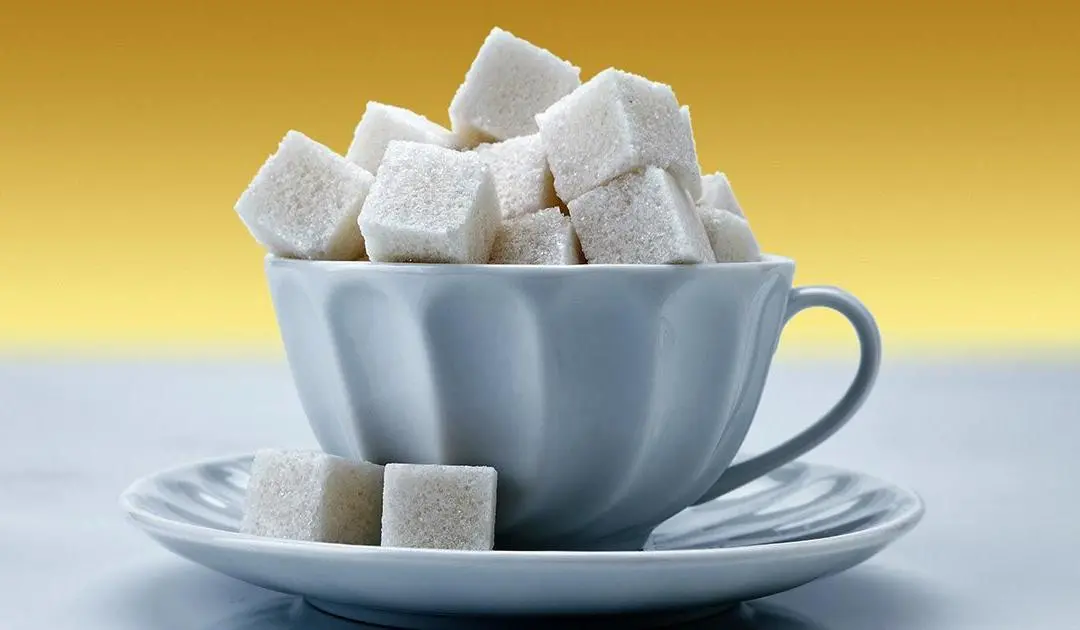
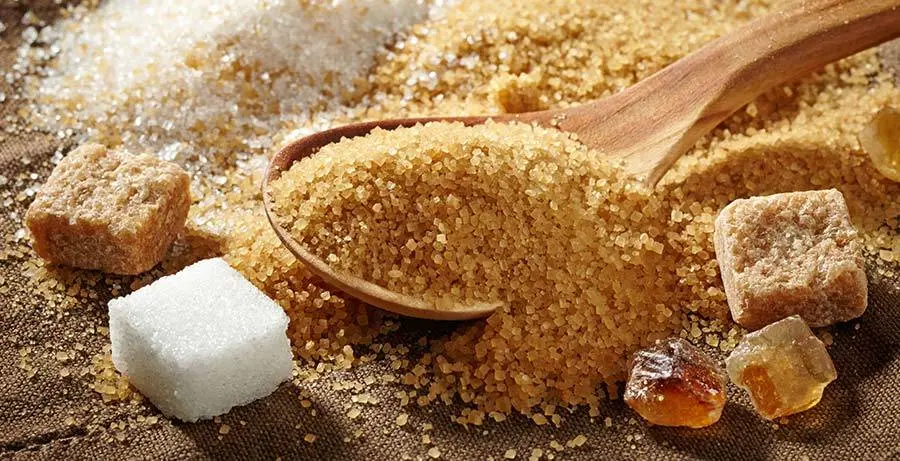
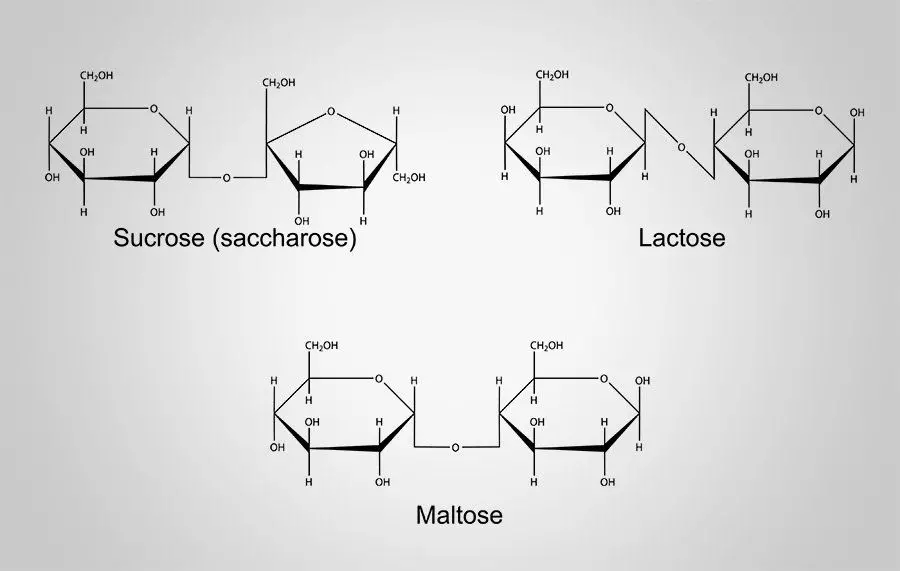
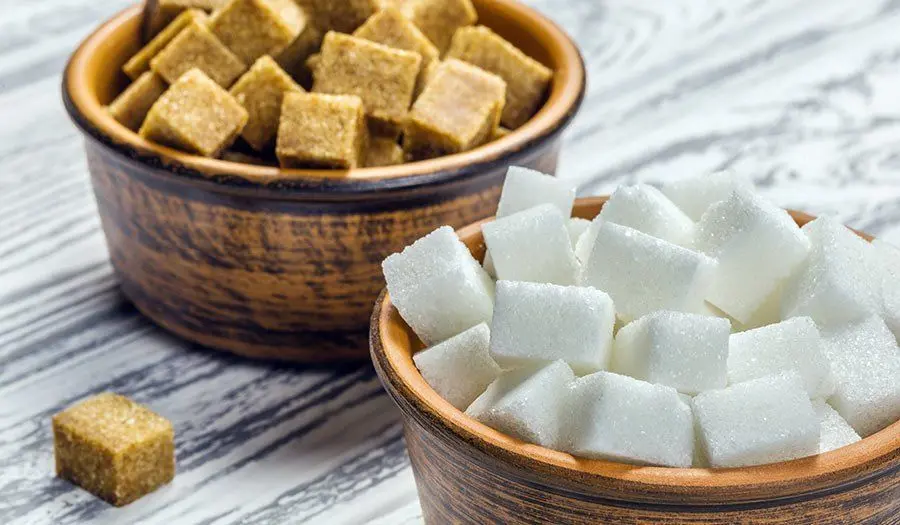


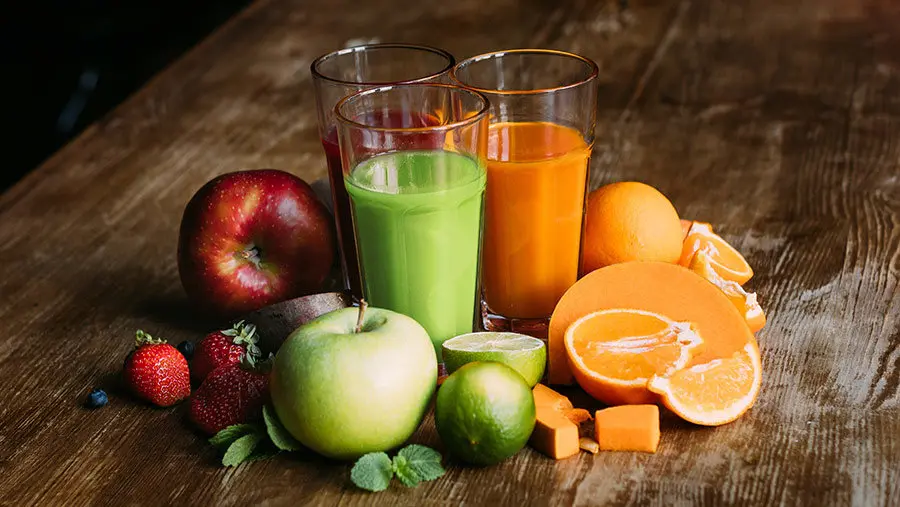

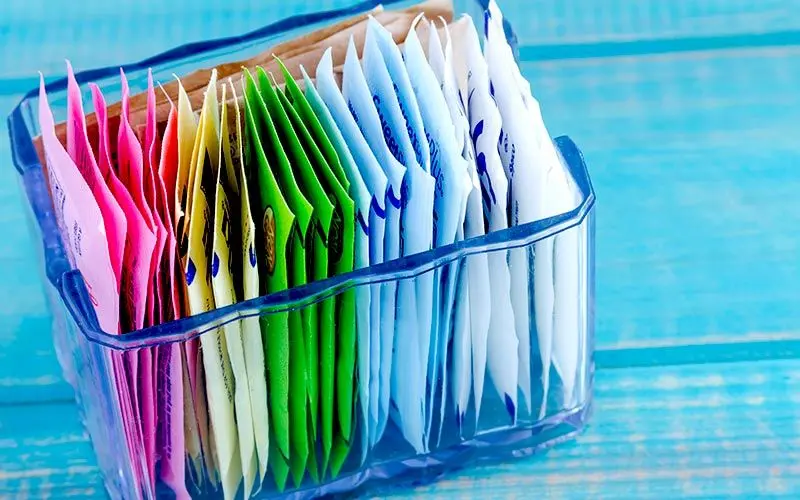



I couldn’t agree more. I was drinking about 32oz of sweet tea a day. No candy or really any other obvious sources of sugar though. After switching tea for water and yes small diet change and maybe 1.5 hours of cardio I lost about 17 pounds in just under a month (38yo male start 197#). It has been very easy to do and not sure if there is a connection but (according to my fitbit) my deep sleep has gone from around 1:20 to nearly 3 hours a night. I can’t wait to see how I feel once I kick it up another notch.
Ray, I appreciate the feedback. And yes, you made some very good decisions, which clearly made a real difference. I’m happy to hear about the better quality sleep and I’m not sure if there’s anything connected, but it’s worth doing a solid literature review and article (if it is connected). I hope you maintain the same momentum going forward. Thanks again and I wish you well Ray!
Hi, Glynn! I enjoy reading your articles and have learned a lot from you.
This past fall, I signed on for a “6 week challenge” at a local gym which involved a strict diet – no sugar, limited carbs and fat. I lost 15 lbs., about 6% of my body fat, and feel much better of course. It was only after I moderated the diet and allowed some sugar back into my diet that I realized: on the no-sugar diet, I had no hot flashes at all. Now that I am eating a little bit of sugar, I do get them occasionally – but not as frequently as before. I don’t know if this is a common effect of cutting sugar, but it sure points up the hormonal connection, and may be another incentive for women of a certain age to give up sugar.
Hi Sally,
Your kind words are very meaningful and appreciated. Your changes from the challenge are profound and just another reinforcement of sugars detrimental effects. And you are absolutely correct about the hormonal influence of sugar on women. That’s a great reason in and of itself to limit sugar. Keep up your great work as I know you’ll never regret the effort. Thank you and I wish you well.
Very helpful, I made a commitment to end sugar and have pretty much eliminated it except for fruit (and the occasional lapse). I thought the fiber in fruit was supposed to offset the carbs. I’ll have to work on that now. Thank you
Greg,
I’m so glad you found this helpful and sincerely appreciate the kind words! That simple change will have a real impact on your progress. Thank you and I wish you well.